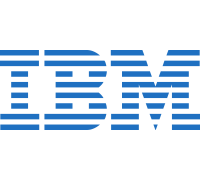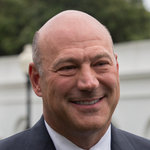
International Business Machines Corp
NYSE:IBM


| US |

|
Johnson & Johnson
NYSE:JNJ
|
Pharmaceuticals
|
| US |

|
Berkshire Hathaway Inc
NYSE:BRK.A
|
Financial Services
|
| US |

|
Bank of America Corp
NYSE:BAC
|
Banking
|
| US |

|
Mastercard Inc
NYSE:MA
|
Technology
|
| US |

|
UnitedHealth Group Inc
NYSE:UNH
|
Health Care
|
| US |

|
Exxon Mobil Corp
NYSE:XOM
|
Energy
|
| US |

|
Pfizer Inc
NYSE:PFE
|
Pharmaceuticals
|
| US |

|
Palantir Technologies Inc
NYSE:PLTR
|
Technology
|
| US |

|
Nike Inc
NYSE:NKE
|
Textiles, Apparel & Luxury Goods
|
| US |

|
Visa Inc
NYSE:V
|
Technology
|
| CN |

|
Alibaba Group Holding Ltd
NYSE:BABA
|
Retail
|
| US |

|
JPMorgan Chase & Co
NYSE:JPM
|
Banking
|
| US |

|
Coca-Cola Co
NYSE:KO
|
Beverages
|
| US |

|
Walmart Inc
NYSE:WMT
|
Retail
|
| US |

|
Verizon Communications Inc
NYSE:VZ
|
Telecommunication
|
| US |

|
Chevron Corp
NYSE:CVX
|
Energy
|
Utilize notes to systematically review your investment decisions. By reflecting on past outcomes, you can discern effective strategies and identify those that underperformed. This continuous feedback loop enables you to adapt and refine your approach, optimizing for future success.
Each note serves as a learning point, offering insights into your decision-making processes. Over time, you'll accumulate a personalized database of knowledge, enhancing your ability to make informed decisions quickly and effectively.
With a comprehensive record of your investment history at your fingertips, you can compare current opportunities against past experiences. This not only bolsters your confidence but also ensures that each decision is grounded in a well-documented rationale.
Do you really want to delete this note?
This action cannot be undone.

| 52 Week Range |
217.4
314.98
|
| Price Target |
|
We'll email you a reminder when the closing price reaches USD.
Choose the stock you wish to monitor with a price alert.

|
Johnson & Johnson
NYSE:JNJ
|
US |

|
Berkshire Hathaway Inc
NYSE:BRK.A
|
US |

|
Bank of America Corp
NYSE:BAC
|
US |

|
Mastercard Inc
NYSE:MA
|
US |

|
UnitedHealth Group Inc
NYSE:UNH
|
US |

|
Exxon Mobil Corp
NYSE:XOM
|
US |

|
Pfizer Inc
NYSE:PFE
|
US |

|
Palantir Technologies Inc
NYSE:PLTR
|
US |

|
Nike Inc
NYSE:NKE
|
US |

|
Visa Inc
NYSE:V
|
US |

|
Alibaba Group Holding Ltd
NYSE:BABA
|
CN |

|
JPMorgan Chase & Co
NYSE:JPM
|
US |

|
Coca-Cola Co
NYSE:KO
|
US |

|
Walmart Inc
NYSE:WMT
|
US |

|
Verizon Communications Inc
NYSE:VZ
|
US |

|
Chevron Corp
NYSE:CVX
|
US |
This alert will be permanently deleted.
International Business Machines Corp





International Business Machines Corp., known globally as IBM, is a storied pillar of American enterprise and innovation, tracing its roots back to the early 20th century. Originally starting with products like tabulating machines and punch cards, IBM quickly carved a niche for itself in the burgeoning field of data processing. As the decades rolled on, IBM transformed alongside the digital revolution; it was a key player in the creation of the modern computer. The company adeptly shifted its focus, catering not only to the massive corporate demand for computing solutions but also pioneering research in areas like artificial intelligence and quantum computing. This adaptability underscores IBM's proficiency in leveraging its historical expertise in hardware to evolve into a leader in software and services.
Today, IBM generates revenue through a diversified portfolio that combines traditional strengths with cutting-edge innovations. Its business model is intricately balanced between hardware, software, and a major focus on high-margin services. Core to its operations is its cloud computing segment, where IBM Cloud stands as a formidable competitor against giants like Amazon and Microsoft. Additionally, its consulting services leverage deep industry expertise to solve complex IT challenges for businesses worldwide, encapsulating a blend of technology and human insight. By continuously investing in research and development, IBM not only positions itself at the forefront of technological advancements but also sustains its adaptability to industry demands, securing its place as a perennial heavyweight in the tech industry.

International Business Machines Corp., known globally as IBM, is a storied pillar of American enterprise and innovation, tracing its roots back to the early 20th century. Originally starting with products like tabulating machines and punch cards, IBM quickly carved a niche for itself in the burgeoning field of data processing. As the decades rolled on, IBM transformed alongside the digital revolution; it was a key player in the creation of the modern computer. The company adeptly shifted its focus, catering not only to the massive corporate demand for computing solutions but also pioneering research in areas like artificial intelligence and quantum computing. This adaptability underscores IBM's proficiency in leveraging its historical expertise in hardware to evolve into a leader in software and services.
Today, IBM generates revenue through a diversified portfolio that combines traditional strengths with cutting-edge innovations. Its business model is intricately balanced between hardware, software, and a major focus on high-margin services. Core to its operations is its cloud computing segment, where IBM Cloud stands as a formidable competitor against giants like Amazon and Microsoft. Additionally, its consulting services leverage deep industry expertise to solve complex IT challenges for businesses worldwide, encapsulating a blend of technology and human insight. By continuously investing in research and development, IBM not only positions itself at the forefront of technological advancements but also sustains its adaptability to industry demands, securing its place as a perennial heavyweight in the tech industry.
Revenue Beat: IBM reported 7% revenue growth in Q3, the highest in several years, with all segments accelerating sequentially and results exceeding expectations.
Guidance Raised: Management increased full-year guidance, now expecting revenue growth of more than 5% and free cash flow of about $14 billion for 2025.
Profitability: Adjusted EBITDA grew 22% and operating EPS increased 15%, with margins expanding across all segments, underscoring strong operating leverage.
AI & Automation: AI adoption is driving both client demand and significant internal productivity improvements, with IBM’s AI book of business now over $9.5 billion and Automation revenue up 22%.
Consulting Momentum: Consulting returned to growth, up 2% in Q3, with strong demand for AI services and over 200 consulting projects using digital AI workers at scale.
Infrastructure Strength: Infrastructure grew 15%, led by IBM Z (up 59% YoY) and robust demand for AI-enabled mainframes and storage.
Capital Allocation: IBM ended the quarter with $14.9 billion in cash, has returned $4.7 billion to shareholders YTD, and highlighted ongoing disciplined M&A and investment strategy.
Red Hat & Software: Red Hat bookings up 20% and revenue up 12%; Software revenue growth at 9%, with recurring revenue base reaching $23.2 billion.
Management

Arvind Krishna is a prominent executive and the Chairman and Chief Executive Officer (CEO) of IBM (International Business Machines Corporation). He was appointed CEO on April 6, 2020, succeeding Ginni Rometty, and later became Chairman of the Board on January 1, 2021. Arvind Krishna was born in West Godavari, Andhra Pradesh, India. He grew up in multiple cities across India due to his father's work in the Indian Army. Krishna earned his Bachelor of Technology degree in Electrical Engineering from the Indian Institute of Technology, Kanpur. He then moved to the United States, where he pursued graduate studies, earning a Ph.D. in Electrical Engineering from the University of Illinois at Urbana-Champaign. Krishna joined IBM in 1990, starting at the company's Thomas J. Watson Research Center. Over the years, he held several key positions across various divisions within IBM. Before becoming CEO, he was instrumental in IBM's strategic direction in areas like cloud computing, artificial intelligence (AI), and quantum computing. He notably led the successful acquisition of Red Hat, a major deal that significantly enhanced IBM's hybrid cloud strategy. Throughout his tenure, Krishna has been known for his strong technical expertise, strategic vision, and ability to drive innovation. His leadership is focused on transforming IBM into a leader in hybrid cloud solutions and artificial intelligence, addressing the evolving needs of businesses in the digital era.

Arvind Krishna was born in West Godavari, Andhra Pradesh, India. He grew up in multiple cities across India due to his father's work in the Indian Army. Krishna earned his Bachelor of Technology degree in Electrical Engineering from the Indian Institute of Technology, Kanpur. He then moved to the United States, where he pursued graduate studies, earning a Ph.D. in Electrical Engineering from the University of Illinois at Urbana-Champaign.
Krishna joined IBM in 1990, starting at the company's Thomas J. Watson Research Center. Over the years, he held several key positions across various divisions within IBM. Before becoming CEO, he was instrumental in IBM's strategic direction in areas like cloud computing, artificial intelligence (AI), and quantum computing. He notably led the successful acquisition of Red Hat, a major deal that significantly enhanced IBM's hybrid cloud strategy.
Throughout his tenure, Krishna has been known for his strong technical expertise, strategic vision, and ability to drive innovation. His leadership is focused on transforming IBM into a leader in hybrid cloud solutions and artificial intelligence, addressing the evolving needs of businesses in the digital era.

Gary D. Cohn is a prominent figure in the business world, currently serving as Vice Chairman of IBM. Before joining IBM, he was best known for his role as the Chief Economic Advisor to President Donald Trump and Director of the National Economic Council from January 2017 until April 2018. In this position, he played a significant role in shaping U.S. economic policy, including efforts on tax reform and regulatory relief. Before his time in government, Cohn had a long and distinguished career at Goldman Sachs, where he served in multiple senior roles, ultimately becoming the firm's President and Chief Operating Officer from 2006 to 2016. His tenure at Goldman Sachs was marked by his involvement in various strategic initiatives that helped shape the firm's trajectory. Gary Cohn's career has been characterized by his strong leadership abilities and his ability to navigate complex financial landscapes. After leaving the public sector, he has continued to influence the technology and finance sectors through his position at IBM and other engagements. His experience in both the private and public sectors provides him with a unique perspective on the intersection of economics, business, and policy.

Before his time in government, Cohn had a long and distinguished career at Goldman Sachs, where he served in multiple senior roles, ultimately becoming the firm's President and Chief Operating Officer from 2006 to 2016. His tenure at Goldman Sachs was marked by his involvement in various strategic initiatives that helped shape the firm's trajectory.
Gary Cohn's career has been characterized by his strong leadership abilities and his ability to navigate complex financial landscapes. After leaving the public sector, he has continued to influence the technology and finance sectors through his position at IBM and other engagements. His experience in both the private and public sectors provides him with a unique perspective on the intersection of economics, business, and policy.

James J. Kavanaugh is a notable executive at International Business Machines Corporation (IBM). He has held the position of Senior Vice President and Chief Financial Officer (CFO) since January 2018. In his role as CFO, Kavanaugh is responsible for leading IBM's global finance and operations, a critical function that includes managing financial strategy, accounting, internal controls, corporate development, and investor relations. Before assuming the CFO role, Kavanaugh served in various key positions within IBM, showcasing his extensive experience in the company. He joined IBM in 1996 and has held leadership roles in several areas, including finance, operations, and business development. Prior to becoming CFO, he was the Senior Vice President of Transformation & Operations, where he worked on initiatives to improve IBM's operational effectiveness and managed significant transformation projects. Kavanaugh has a strong background in finance and management, which has been instrumental in navigating IBM through significant transitions in the technology sector. His leadership is credited with optimizing financial performance and guiding strategic investments to align with IBM's long-term business goals. Before his tenure at IBM, he worked at AT&T and held various positions in finance, as well as corporate development roles. His experience in diverse industries contributes to his capability in handling complex financial and strategic operations at IBM. James J. Kavanaugh is recognized for his strategic acumen and his contributions to IBM's financial stability and growth. His leadership continues to steer the company through the evolving landscape of the technology industry.

Before assuming the CFO role, Kavanaugh served in various key positions within IBM, showcasing his extensive experience in the company. He joined IBM in 1996 and has held leadership roles in several areas, including finance, operations, and business development. Prior to becoming CFO, he was the Senior Vice President of Transformation & Operations, where he worked on initiatives to improve IBM's operational effectiveness and managed significant transformation projects.
Kavanaugh has a strong background in finance and management, which has been instrumental in navigating IBM through significant transitions in the technology sector. His leadership is credited with optimizing financial performance and guiding strategic investments to align with IBM's long-term business goals.
Before his tenure at IBM, he worked at AT&T and held various positions in finance, as well as corporate development roles. His experience in diverse industries contributes to his capability in handling complex financial and strategic operations at IBM.
James J. Kavanaugh is recognized for his strategic acumen and his contributions to IBM's financial stability and growth. His leadership continues to steer the company through the evolving landscape of the technology industry.

Robert D. Thomas, often known as Bob Thomas, is a well-recognized figure in the corporate world due to his significant contributions to International Business Machines Corp (IBM). He has held various leadership and strategic roles throughout his career within the company, marking a distinguished presence. Thomas is noted for having been one of the key figures in driving IBM's growth and transformation during his tenure. His leadership skills and deep understanding of technology and business markets have been instrumental in evolving the company's strategy, particularly as IBM shifted focus toward software and services, cloud computing, and artificial intelligence solutions. Before rising to these prominent roles, he gained extensive experience within IBM, which allowed him to understand the company's vast product line and diverse markets. Under his capacity, he has contributed to major corporate strategies that involve digital transformation and operational efficiency, reinforcing IBM's position as a leader in the tech industry. Thomas' tenure at IBM was marked by a commitment to innovation, fostering a culture that emphasizes research and development, which is crucial for technological advancement and maintaining competitiveness in the rapidly evolving tech landscape. While his influence has been felt across various sectors within the company, he is particularly recognized for his work in aligning IBM's business practices with modern technological trends, ensuring continued relevance in a changing market. His career is emblematic of a blend of technical acumen and strategic foresight, positioning him as a notable executive who has had a substantial impact on IBM's trajectory in the global technology field.

Thomas is noted for having been one of the key figures in driving IBM's growth and transformation during his tenure. His leadership skills and deep understanding of technology and business markets have been instrumental in evolving the company's strategy, particularly as IBM shifted focus toward software and services, cloud computing, and artificial intelligence solutions.
Before rising to these prominent roles, he gained extensive experience within IBM, which allowed him to understand the company's vast product line and diverse markets. Under his capacity, he has contributed to major corporate strategies that involve digital transformation and operational efficiency, reinforcing IBM's position as a leader in the tech industry.
Thomas' tenure at IBM was marked by a commitment to innovation, fostering a culture that emphasizes research and development, which is crucial for technological advancement and maintaining competitiveness in the rapidly evolving tech landscape. While his influence has been felt across various sectors within the company, he is particularly recognized for his work in aligning IBM's business practices with modern technological trends, ensuring continued relevance in a changing market.
His career is emblematic of a blend of technical acumen and strategic foresight, positioning him as a notable executive who has had a substantial impact on IBM's trajectory in the global technology field.

Joanne Wright is a seasoned executive at International Business Machines Corp (IBM) with a distinguished career in the intersection of technology and operations. She has held significant leadership positions within the company, contributing to IBM's strategic initiatives and operational excellence. As of her recent role, Joanne Wright served as the Vice President of Enterprise Operations and Services, where she was responsible for overseeing and transforming IBM's internal operations, ensuring efficiency and innovation across the organization's processes. With a strong focus on leveraging data analytics and technology to drive business outcomes, Wright has been instrumental in shaping IBM's operational strategies. She is known for her leadership in enhancing supply chain management, streamlining processes, and implementing digital solutions to improve overall enterprise performance. Throughout her career at IBM, Joanne Wright has earned recognition for her ability to lead diverse teams and drive change in complex environments. Her contributions have been pivotal in advancing IBM's mission to integrate cutting-edge technology into its global operations, solidifying its reputation as a leader in the technology industry.

With a strong focus on leveraging data analytics and technology to drive business outcomes, Wright has been instrumental in shaping IBM's operational strategies. She is known for her leadership in enhancing supply chain management, streamlining processes, and implementing digital solutions to improve overall enterprise performance.
Throughout her career at IBM, Joanne Wright has earned recognition for her ability to lead diverse teams and drive change in complex environments. Her contributions have been pivotal in advancing IBM's mission to integrate cutting-edge technology into its global operations, solidifying its reputation as a leader in the technology industry.

Alexander Franz Stern is not an executive officer at International Business Machines Corp (IBM). Therefore, I do not have any specific biographical information on him related to IBM. If you meant a different person or company, please provide additional details.


Anne E. Robinson is a seasoned executive with extensive experience in the technology and financial sectors. She currently serves as the Senior Vice President, General Counsel, and Secretary at IBM (International Business Machines Corp). In this role, she is responsible for overseeing the company’s global legal, security, and government and regulatory affairs, and is a key adviser to IBM's board of directors and senior management team. Before joining IBM, Robinson was the General Counsel and Managing Director for Vanguard, one of the world's largest investment management companies, where she had significant influence in shaping the firm’s legal strategy and operations. She also held senior legal positions at other prestigious financial institutions such as American Express and Goldman Sachs, where she developed extensive expertise in regulatory compliance, corporate governance, and securities law. Anne E. Robinson earned her Juris Doctor degree from Columbia Law School after completing her undergraduate studies at Hampton University. Her leadership and contributions have been recognized widely, including her commitment to diversity and inclusion in the workplace.

Before joining IBM, Robinson was the General Counsel and Managing Director for Vanguard, one of the world's largest investment management companies, where she had significant influence in shaping the firm’s legal strategy and operations. She also held senior legal positions at other prestigious financial institutions such as American Express and Goldman Sachs, where she developed extensive expertise in regulatory compliance, corporate governance, and securities law.
Anne E. Robinson earned her Juris Doctor degree from Columbia Law School after completing her undergraduate studies at Hampton University. Her leadership and contributions have been recognized widely, including her commitment to diversity and inclusion in the workplace.

Jonathan H. Adashek is a notable executive who served as the Senior Vice President and Chief Communications Officer for IBM. In his role, Adashek was responsible for managing and overseeing all global communications activities for the company, ensuring that IBM's messaging aligned with its strategic goals and resonated with its diverse stakeholders. Before joining IBM, Adashek held several key positions in other major organizations. Notably, he was the Global Communications Director for Nissan Motor Co., where he led communications efforts for the company worldwide. His experience also extends to the technology sector, having worked with Microsoft in significant communications capacities. Adashek's career is marked by his expertise in corporate communications, public affairs, and strategic messaging, which have made him a respected figure in both the business and communications industries. His work has been integral in shaping the public image and strategic direction of the companies with which he has been associated.

Before joining IBM, Adashek held several key positions in other major organizations. Notably, he was the Global Communications Director for Nissan Motor Co., where he led communications efforts for the company worldwide. His experience also extends to the technology sector, having worked with Microsoft in significant communications capacities.
Adashek's career is marked by his expertise in corporate communications, public affairs, and strategic messaging, which have made him a respected figure in both the business and communications industries. His work has been integral in shaping the public image and strategic direction of the companies with which he has been associated.


Dr. Bernard S. Meyerson is a renowned scientist and executive who has made significant contributions to the field of technology through his work at IBM (International Business Machines Corporation). He is widely recognized for his expertise in physics and his pioneering work in semiconductor technology and innovation. Dr. Meyerson began his career at IBM in the late 1970s and quickly became a leading figure in the development of silicon-germanium (SiGe) technology, which revolutionized the performance and efficiency of semiconductors. His work in this area contributed significantly to advancements in computing power and speed, particularly in the telecommunications industry. Throughout his career at IBM, Dr. Meyerson held several key positions, including Vice President of Innovation and IBM Fellow, which is the company's highest technical position. He has been instrumental in guiding IBM's strategic direction in technology and innovation, influencing the development of future technologies that address global challenges. Dr. Meyerson is also known for his involvement in promoting sustainable technology practices and energy-efficient computing. He has been a vocal advocate for integrating sustainability into technological innovation to ensure a positive impact on society and the environment. In addition to his technical achievements, Dr. Meyerson has received numerous awards and honors for his work, including being named a Fellow of the American Physical Society and the IEEE. His contributions have left a lasting impact on the technology industry and have positioned him as a respected leader and visionary. Dr. Meyerson's influence extends beyond IBM, as he has served on various advisory boards and committees, helping to shape the future direction of technology on a broader scale. His career reflects a commitment to pushing the boundaries of science and technology while considering the greater societal implications.

Dr. Meyerson began his career at IBM in the late 1970s and quickly became a leading figure in the development of silicon-germanium (SiGe) technology, which revolutionized the performance and efficiency of semiconductors. His work in this area contributed significantly to advancements in computing power and speed, particularly in the telecommunications industry.
Throughout his career at IBM, Dr. Meyerson held several key positions, including Vice President of Innovation and IBM Fellow, which is the company's highest technical position. He has been instrumental in guiding IBM's strategic direction in technology and innovation, influencing the development of future technologies that address global challenges.
Dr. Meyerson is also known for his involvement in promoting sustainable technology practices and energy-efficient computing. He has been a vocal advocate for integrating sustainability into technological innovation to ensure a positive impact on society and the environment.
In addition to his technical achievements, Dr. Meyerson has received numerous awards and honors for his work, including being named a Fellow of the American Physical Society and the IEEE. His contributions have left a lasting impact on the technology industry and have positioned him as a respected leader and visionary.
Dr. Meyerson's influence extends beyond IBM, as he has served on various advisory boards and committees, helping to shape the future direction of technology on a broader scale. His career reflects a commitment to pushing the boundaries of science and technology while considering the greater societal implications.




































